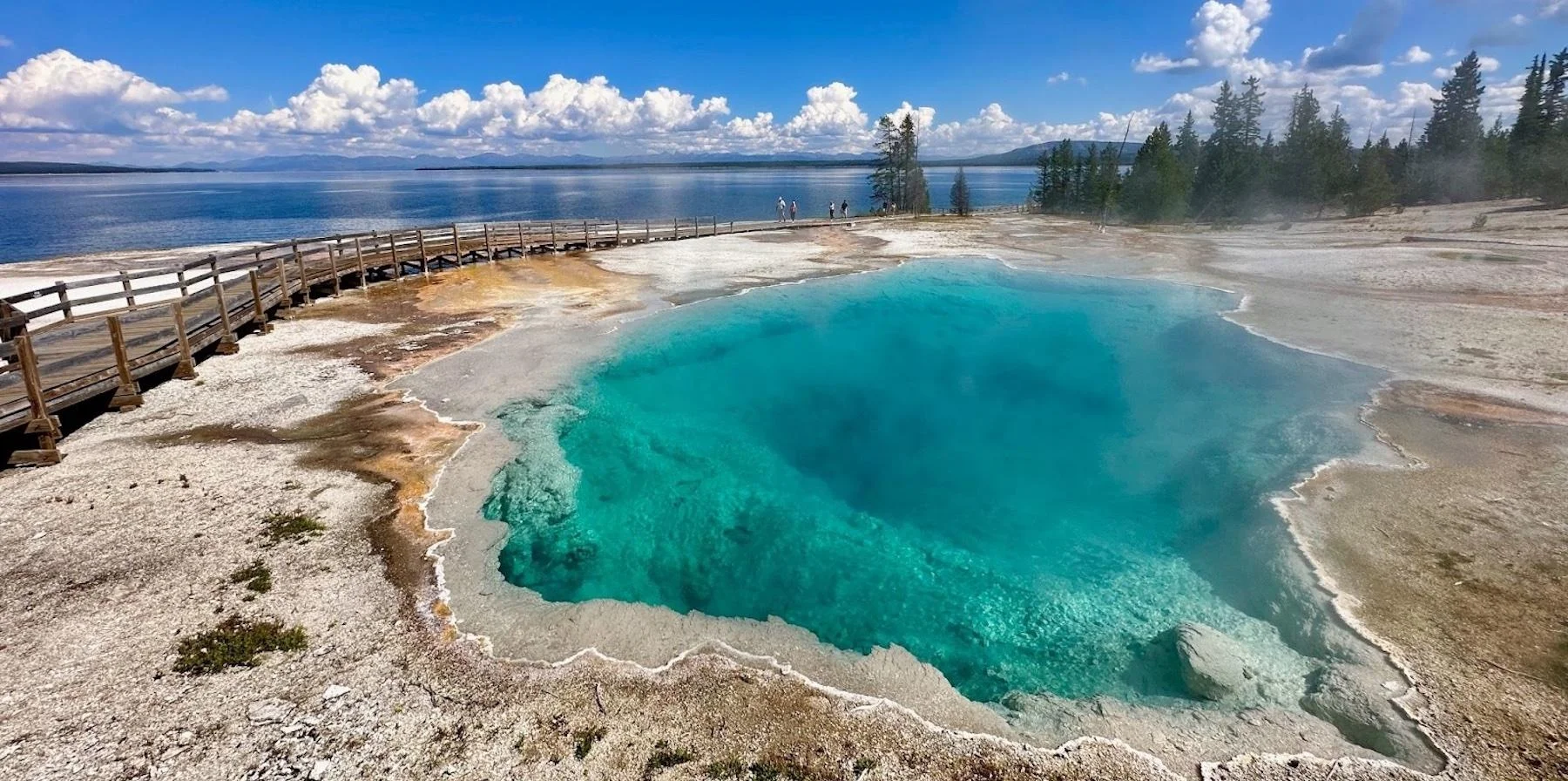It would have been impossible to imagine in the 1800s how dirt paths designed for horses and buggies in the Cody Yellowstone region in Wyoming would one day give way to paved roadways and electric cars. Nor would it have been possible to predict the millions of visitors that would one day pass through the gates of Yellowstone National Park each year to experience the pristine wilderness and America’s geothermal wonders.
But those days have arrived, requiring a careful balancing act between conservation and sustainability efforts while still enabling visitors to enjoy the mountains, rivers, wildlife and history that made the region famous in the first place.
Entities from museums to outdoor adventure companies and even lodging facilities that rely on this region for tourism and business are each doing their part to protect this treasured and storied corner of the American West. Their efforts in conservation and sustainability practices are as varied as their motivations for doing it but collectively, the impact is significant for preserving the region’s past, and protecting its future.
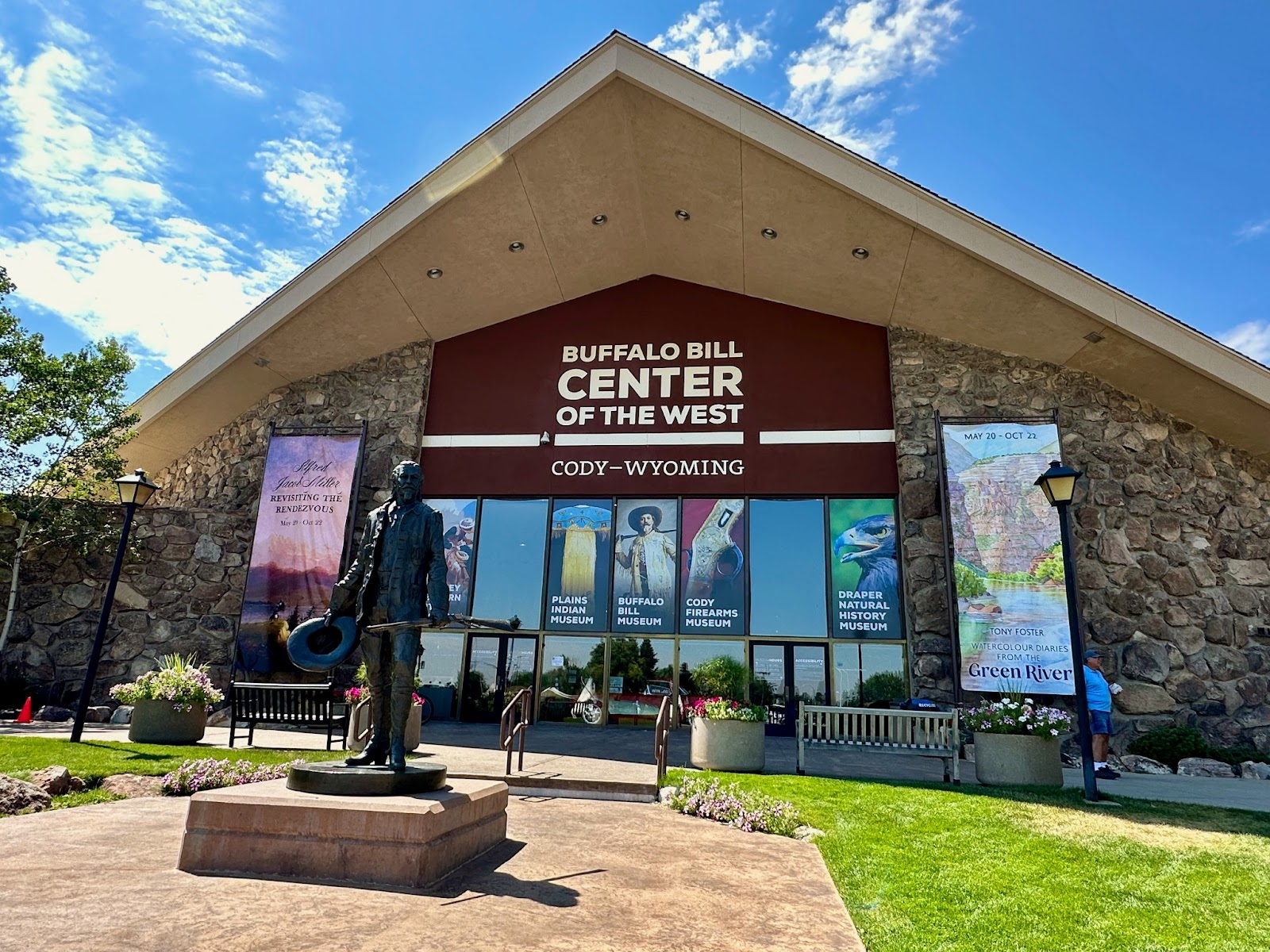
Buffalo Bill Center of the West. Photo by Anietra Hamper
Multi-faceted sustainability: Buffalo Bill Center of the West
The Buffalo Bill Center of the West in Cody, Wyoming, is one of the first stops people make to learn about the history and culture of the region. Beyond the eye-catching artifacts and taxidermy displays, the center and its staff are focused on full-circle sustainability and conservation efforts.
“The center sees the need to address sustainability on a broader scale, seeking to understand how other elements such as people, finances, infrastructure and knowledge can work together to support the goal of being a sustainable organization and place,” said Rebecca West, executive director and CEO of the Buffalo Bill Center of the West.
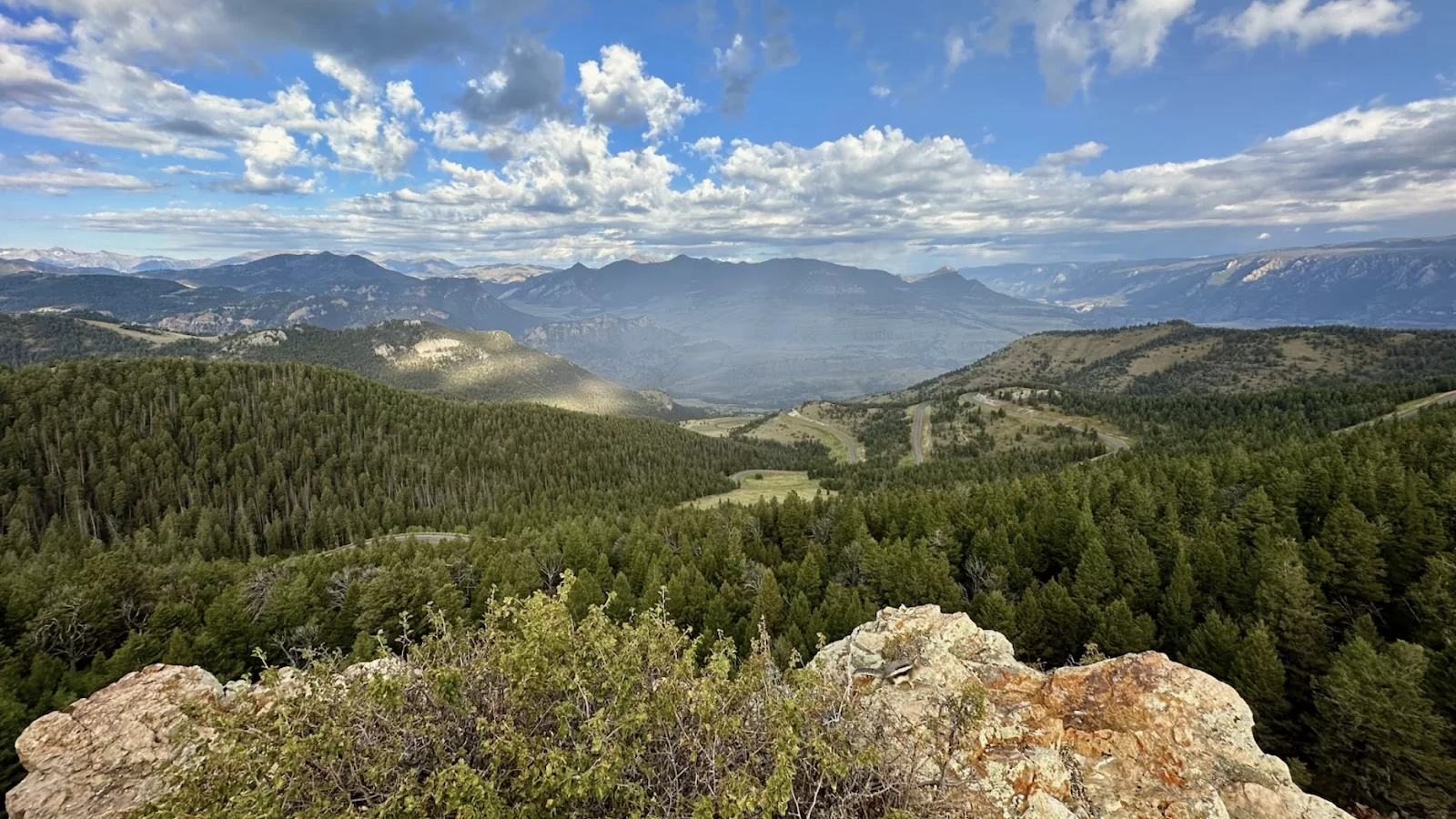
Scenic view over the Cody Yellowstone landscape | Photo by Anietra Hamper
The Buffalo Bill Center of the West is a Smithsonian affiliate located on the road to Yellowstone’s East Gate with five museums under its roof utilizing 300,000 square feet of space. The center has embarked on a five-year strategic plan with sustainability as one of its core goals. It includes specific initiatives to hit all the touchpoints from recycling and reducing energy to zero-scaping landscaping to reduce water consumption and ethical collection of taxidermy specimens.
The center’s multi-faceted efforts are executed by the “Green Team” that is composed of staff and volunteers. As one of the leading employers and destinations in the area for visitors, it is important for the center to be a leader in sustainability.
“We want to be a driving force ensuring that the city at the center of the west, has these sustainability efforts either in place or we plan to have them in place to be a leader in the community,” said Ken Straniere, public relations and marketing manager, Buffalo Bill Center of the West.
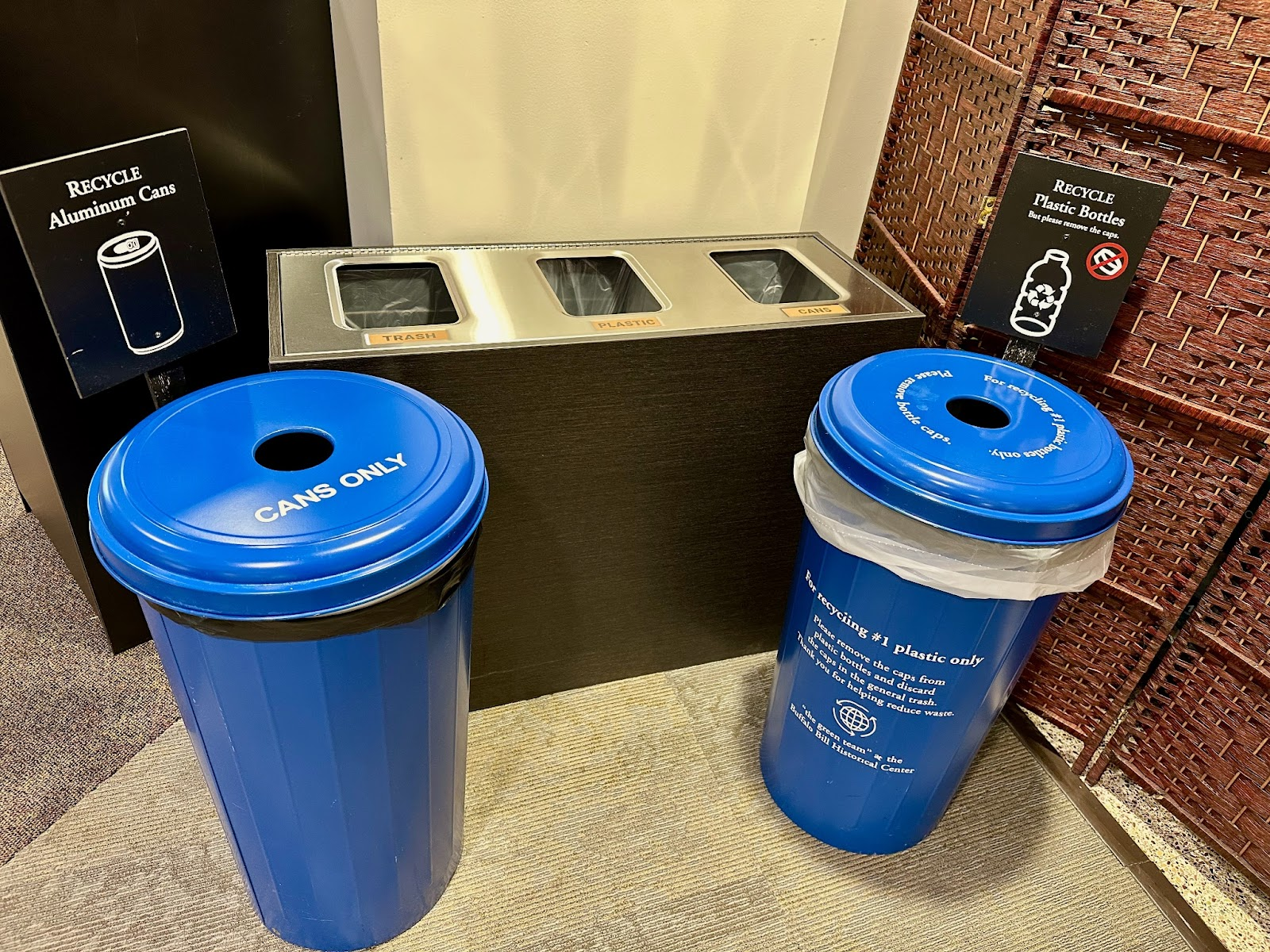
Recycling efforts at the Buffalo Bill Center of the West. Photo by Anietra Hamper
Some of the most visible efforts at the center are the car charging stations and the recycling receptacles located around the facility that get a lot of action with tens of thousands of visitors a month.
“We capture whitepaper, newspaper, magazines, plastic bottles, aluminum and corrugated cardboard, then once a week we haul it to the recycling center, sort it and get it placed where we need to,” said Nancy McClure, electronic communications manager, Buffalo Bill Center of the West.
With Yellowstone only 50 miles from the center’s doorstep the preservation of the surrounding area is personal to everyone who lives and works in Cody. The staff at the Buffalo Bill Center of the West goes the extra mile to ensure that all trash and potential material for recycling ends up where it belongs.
“They’re literally dumpster diving to get a lot of the materials out of where they are and into where they should be,” said Straniere.
Initial construction of the Buffalo Bill Center of the West dates to 1957 so sustainability is a top consideration when updates are needed on infrastructure and mechanical systems.
“They have done a phenomenal job looking at equipment as it ages and replacing it with much more efficient equipment like a steam boiler that reduced our energy consumption by 3000%,” said Jordan Davis, director of operations, Buffalo Bill Center of the West.
Managing energy consumption is not an easy task when the museum’s galleries require climate-controlled environments to protect collections and artifacts. Due to the low humidity in the southwest, one way the center reduces energy use is by turning off the humidification system in the summer. This saves about a half years’ worth of power and every bit matters.
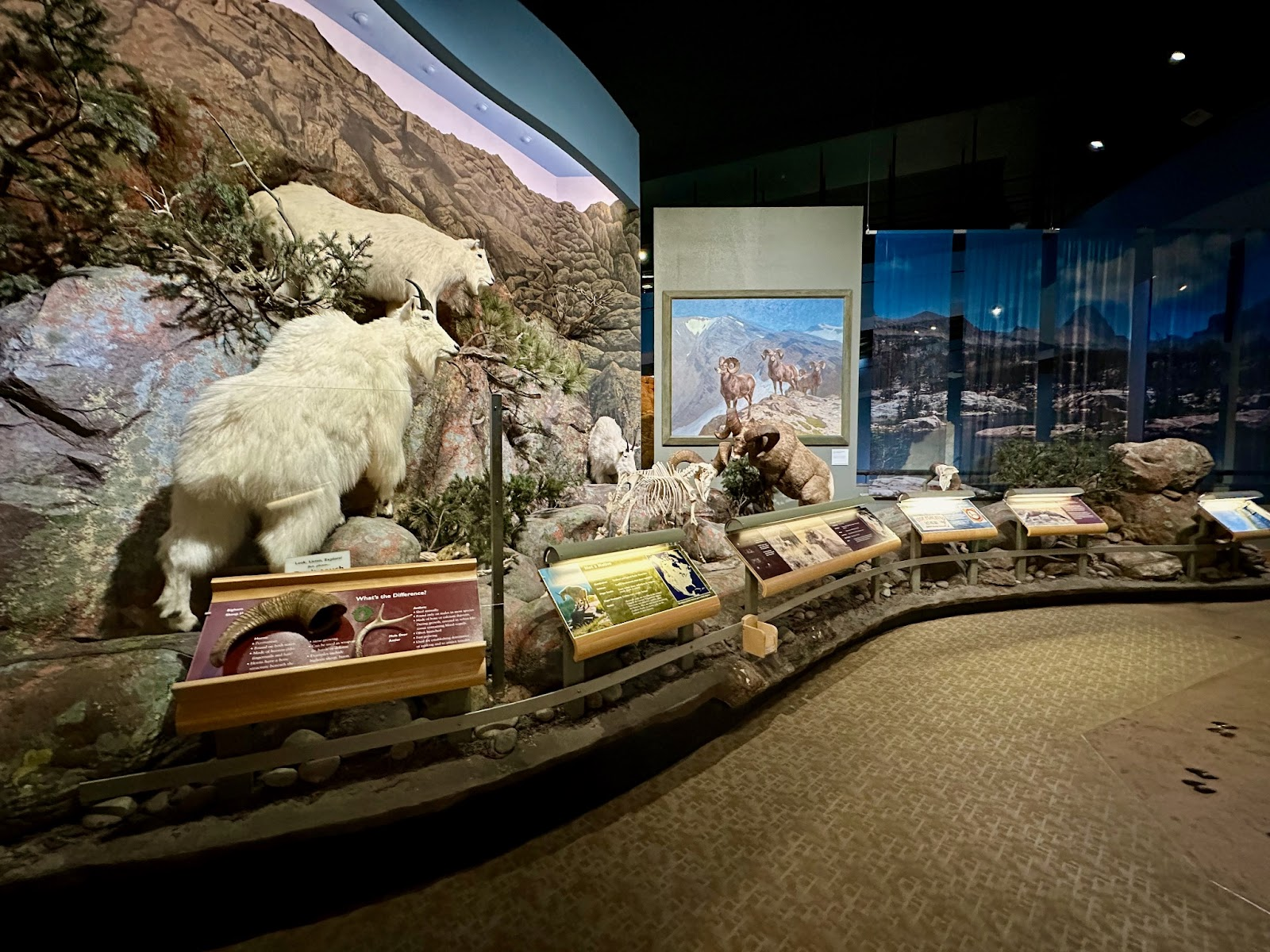
Taxidermy display in the Draper Museum of Natural History. Photo by Anietra Hamper
One of the most compelling sustainability efforts of the center is in the Draper Museum of Natural History where visitors see specimens that represent the biodiversity within the region that are all obtained through salvage-based collection.
“We have things like skins, skeletons, geology, botany, insects and how we acquire them in an ethically, humane manner is central to our mission as a natural history museum that is seeking to minimize our impact on the biodiversity of the region,” said Corey Anco, Willis McDonald IV curator of natural science, Draper Natural History Museum.
Carnivore specimens come from the Wyoming Game and Fish Department, birds come from a wildlife rehabilitation facility if they have succumbed to an injury, and the center has a permit to salvage animals that have been killed for education and research.
The reality of continuing these kinds of sustainability programs is that they require money to sustain. Funding support is only achieved by showing measurable results which is an added incentive for the Green Team to keep up the efforts.
“It’s great to be philosophical about it but it’s critical to have a business sense about where the money is going to come from. To get it done you have to show a monetary value,” said Phil Anthony, operating engineer (retired), Buffalo Bill Center of the West.
The outcomes of their efforts are working. The Buffalo Bill Center of the West has been recognized with a Sustainability Excellence Award for reducing energy consumption and as a leader in sustainability programs.
The efforts that come down to personal commitments by employees and volunteers is reflected not just in the awards but by the continual funding and implementation of new programs that are proving to make a difference.

Whitewater rafting through Shoshone National Forest. Photo by Landon Blanchard
Putting conservation over profits: Wyoming River Trips
The natural beauty of the Cody Yellowstone region makes it a popular place for outdoor enthusiasts to enjoy hiking, whitewater rafting and horseback riding. Taking advantage of the natural environment also comes with the responsibility of protecting it. That is why companies like Wyoming River Trips and Wyoming Rivers Cooperative are going the extra mile to operate as conservation-first businesses.
Owners and spouses Elyse Guarino and Landon Blanchard serve as environmental stewards at the intersection of conservation and recreation with a mission to connect guests to the outdoors on a deeper level than just enjoying a day of rafting.
“People seem to like thinking about the interconnectedness of everything,” said Elyse Guarino, owner of Wyoming River Trips and Wyoming Rivers Cooperative. “I think in general folks enjoy that we have something bigger in mind beyond just doing rad things on rivers.”
Wyoming River Trips offers single day whitewater rafting with options that take advantage of the region’s natural elements and spectacular canyon runs. These trips operate mostly on the North Fork of the Shoshone River and through the Shoshone National Forest. The Wyoming Rivers Cooperative also offers packrafting adventures on various waters throughout Wyoming for a deeper experience in the region’s natural surroundings.
“The rivers we run do offer quite a bit of excitement at varying times of year as the water changes. However, they also offer an immersive experience in some things that are hard to find in our ever more tech and convenience-filled society. Smells, sounds, silence, circumstances that you don't get to control, sights, creatures, and space to wonder,” said Guarino.

Wyoming River Trips owners Elyse Guarino and Landon Blanchard hiking. Photo by Landon Blanchard
The couple started Wyoming Rivers Cooperative in 2020 with the combined passion of connecting communities to the waterways that run through them. They eventually had an opportunity to purchase Wyoming River Trips, a company started by Blanchard’s father and uncle in 1978. The two companies are now under the same ownership with a primary consideration for the natural environment in which they operate.
“Our goal was to use the established position it [Wyoming River Trips] had in the community to maximize opportunities for beneficial conversation around conservation and to generate ideas about how to create a greater connection to place,” said Guarino.
One of these efforts involves a program called Science Kids utilizing the couple’s expertise, experience, and resources to connect children to their natural world. They do this through river travel float trips and providing hands-on learning about geology, human and plant use history.
Their conservation-minded business model extends to every facet of the company, not just the outward-facing efforts: there is no physical office; the company purchases equipment to last with a priority on upkeep versus replacement; stock in the store is limited; remnant stock elsewhere is purchased to reduce items going to the landfill and there is a focus on selling items made by local creators.

Wyoming River Trips guide on a day trip with guests. Photo by Landon Blanchard
Rafting guides for the company are hired for more than their river and safety knowledge. An emphasis is placed on the personal ethics that guides bring to the job and their passion for connecting guests to a sense of place through their own love of natural history and the environment.Through every effort from the rafting trips on the rivers to business operations, community outreach, and educating guests about protecting these natural surroundings, Wyoming River Trips and Wyoming Rivers Cooperative are putting conservation ahead of profits.
“We aren't trying to make as much money as possible. There are non-monetary profits to be had and in the long-term they far outweigh short term profits. When it comes to habitat, environments, and ecological conservation and diversity, maintaining or improving those things has long-term benefits for the entire planet,” said Guarino.
Leading by example, immersing, and educating visitors about the region and connecting them to a sense of place goes a long way in igniting their passion to protect it while there and long after they leave.
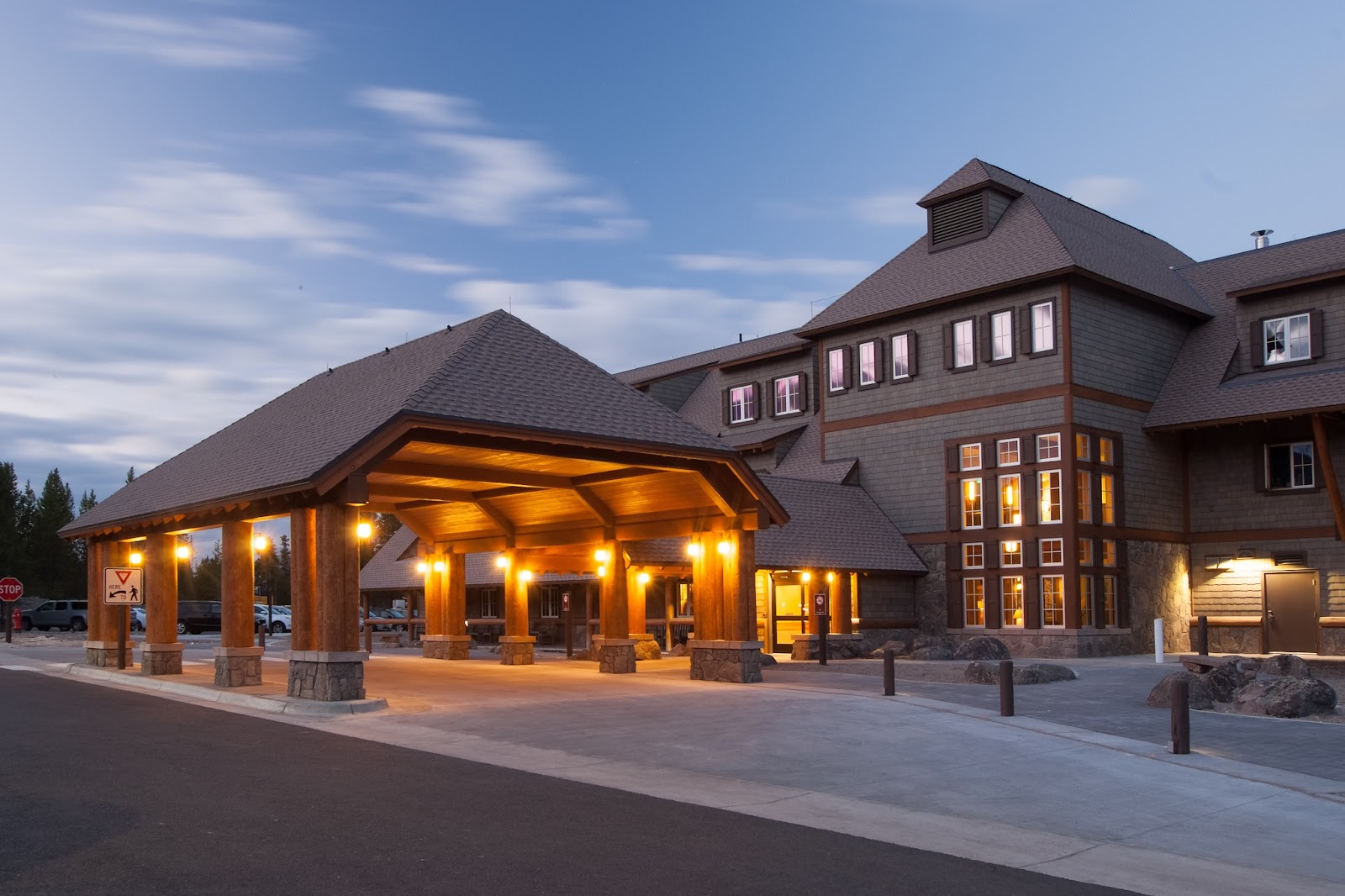
Canyon Lodge in Yellowstone National Park. Photo by Xanterra Travel Collection
Sustainable lodging: Canyon Lodge
More than 4.4 million visitors pass through the gates of Yellowstone National Park each year and since most stay multiple days the lodging that supports this volume of guests must be in-step with the other entities committing to sustainability and conservation efforts in the region.
Canyon Lodge in Yellowstone National Park is a leading example of how even a large hospitality operation can run a conservation-first business when protecting the surrounding environment is a priority. Canyon Lodge replaced its cabins in 2016 that had been in use for more than 40 years with five LEED certified lodges resulting in the largest sustainable lodging initiative in National Park Service history.
“We are granted the ability to operate facilities within the world’s first national park. We are a major contributor to the impacts within the park and we are also a steward of the park. So, we look at our responsibility as how we can help take care of this global asset and ensure that we are protecting this largely intact ecosystem,” said Dylan Hoffman, Director of Sustainability, Canyon Lodge.
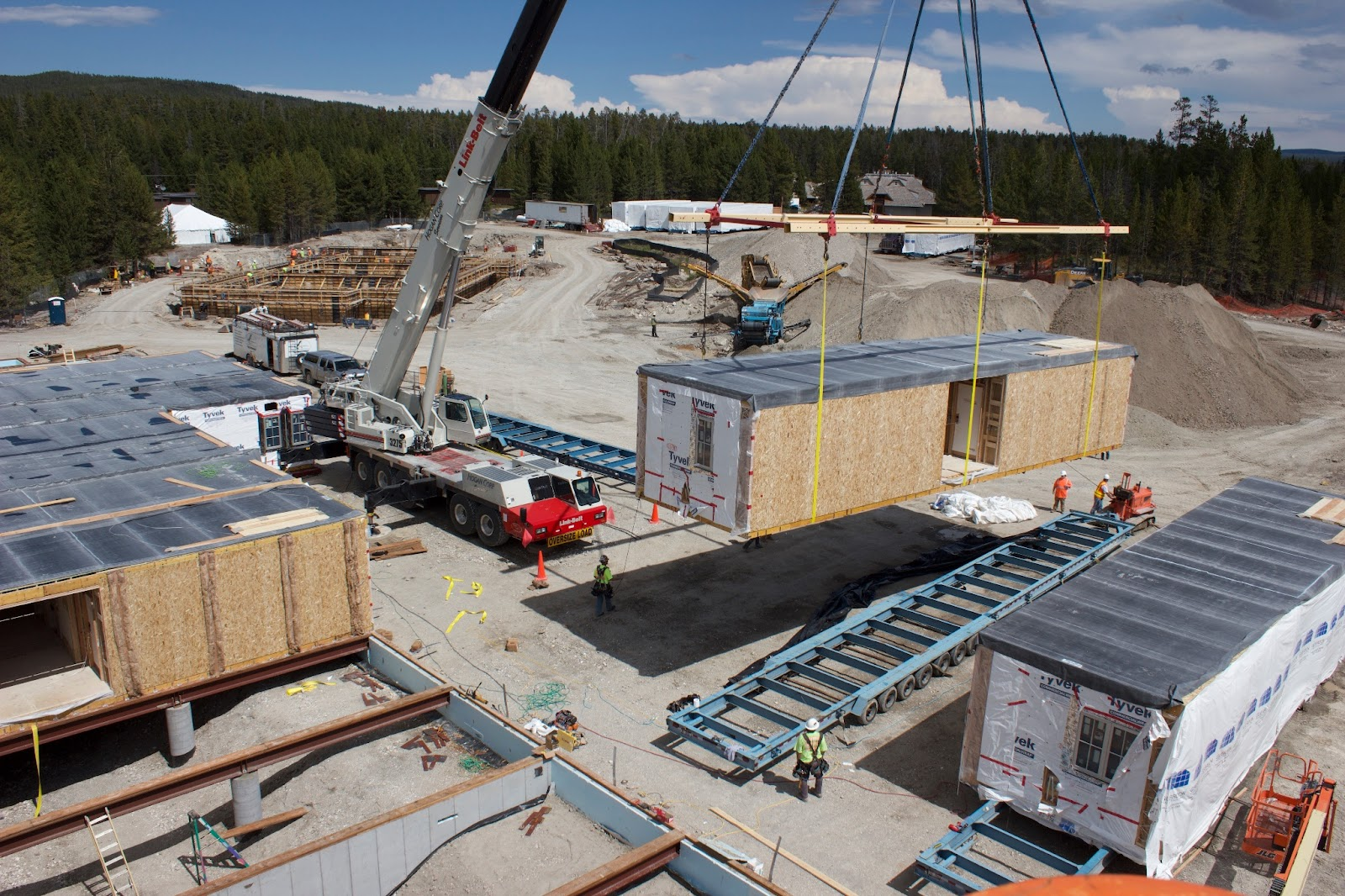
Canyon Lodge being built off-site in a modular process. Photo by Xanterra Travel Collection
Replacing the old cabins with new lodges under a sustainability initiative involved a monumental and tactical effort. The lodges were built off-site enabling construction to happen in a controlled environment through a modular building process. This resulted in an estimated 90% waste diversion because many of the materials were recycled.
The lodge design, guest rooms and public spaces were built to consider every detail using recycled materials when possible. Guests will notice many of the elements like the mountain pine beetle kill lumber that is used throughout the lodges that is essentially a waste product. They will also see sustainability efforts in the guest rooms.
“We did all our countertops, windowsills, and the vanity in guest rooms with 100% recycled products made of crushed glass and fly ash (a byproduct of coal fired power plants). There is in-room energy management where to power up the room you have to put your keycard into a slot,” said Hoffman.
What is not so noticeable to guests are the other operational elements like the kinds of adhesives that are used, mechanical systems, recycled elements in carpets and flooring and products selected that have an environmental certification to them.
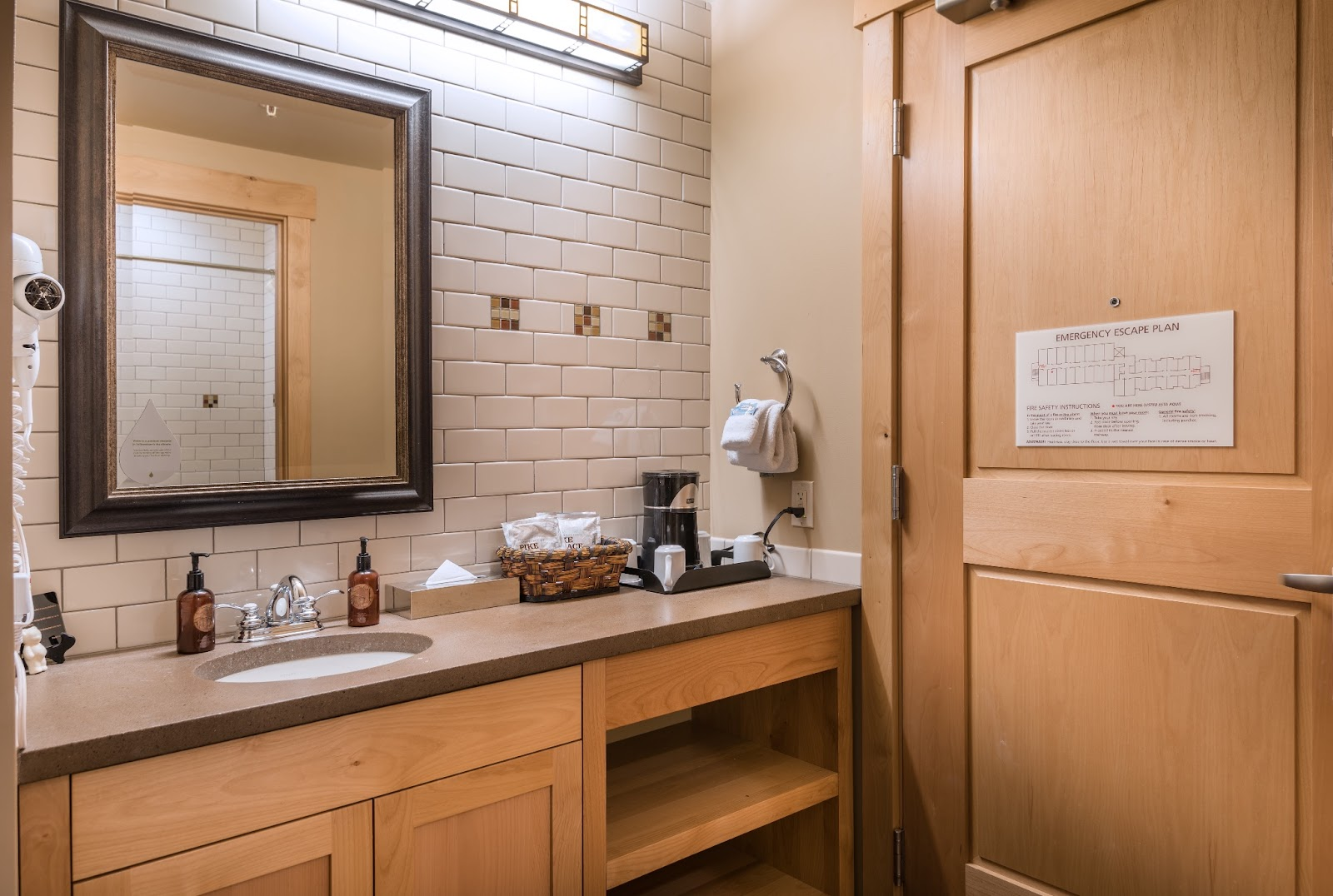
Canyon Lodge bathroom featuring recycled materials. Photo by Xanterra Travel Collection
Operating more than 2,300 guest rooms and up to 17,000 meals a day, the team at Canyon Lodge looks at each touchpoint with guests as an opportunity to engage them in the conversation about why sustainability is important, not just at Yellowstone, but with practices they may learn and take home with them. Hoffman says the entire guest experience at the lodge is about engaging visitors.
“We give them opportunities in their guest rooms to learn about sustainable design and construction; we denote on our menus things that have locally sourced ingredients; we show in our gifts shops things that have recycled content or are locally produced and make the case for why these choices are better from an environmental standpoint,” said Hoffman.
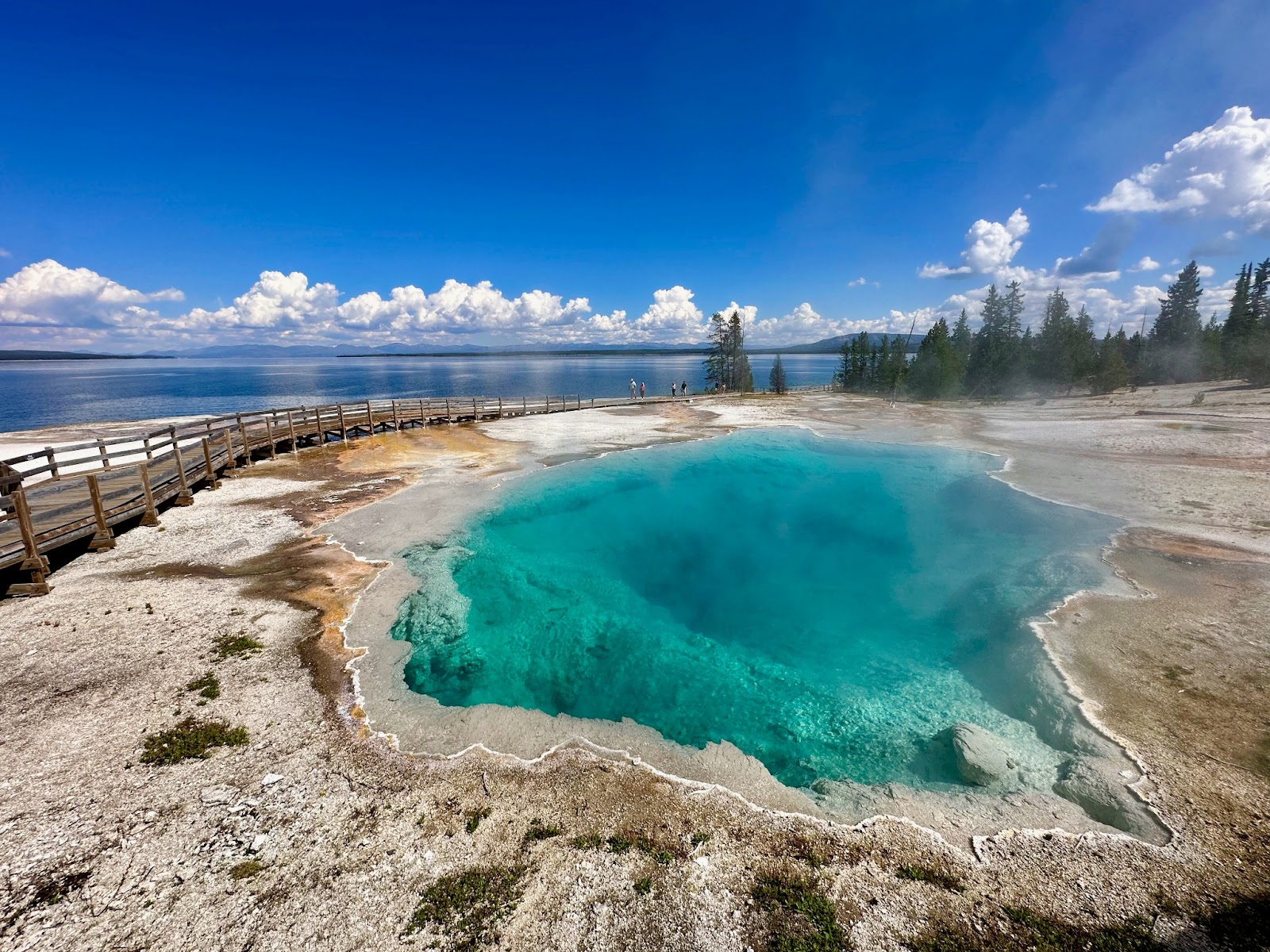
Geothermal features in Yellowstone National Park. Photo by Anietra Hamper
As the pillars of the visitor experience to the Cody Yellowstone region intersect with the deeply committed sustainability efforts of those who call it home, tourists become an active part of the equation to preserve this special place for future generations.
